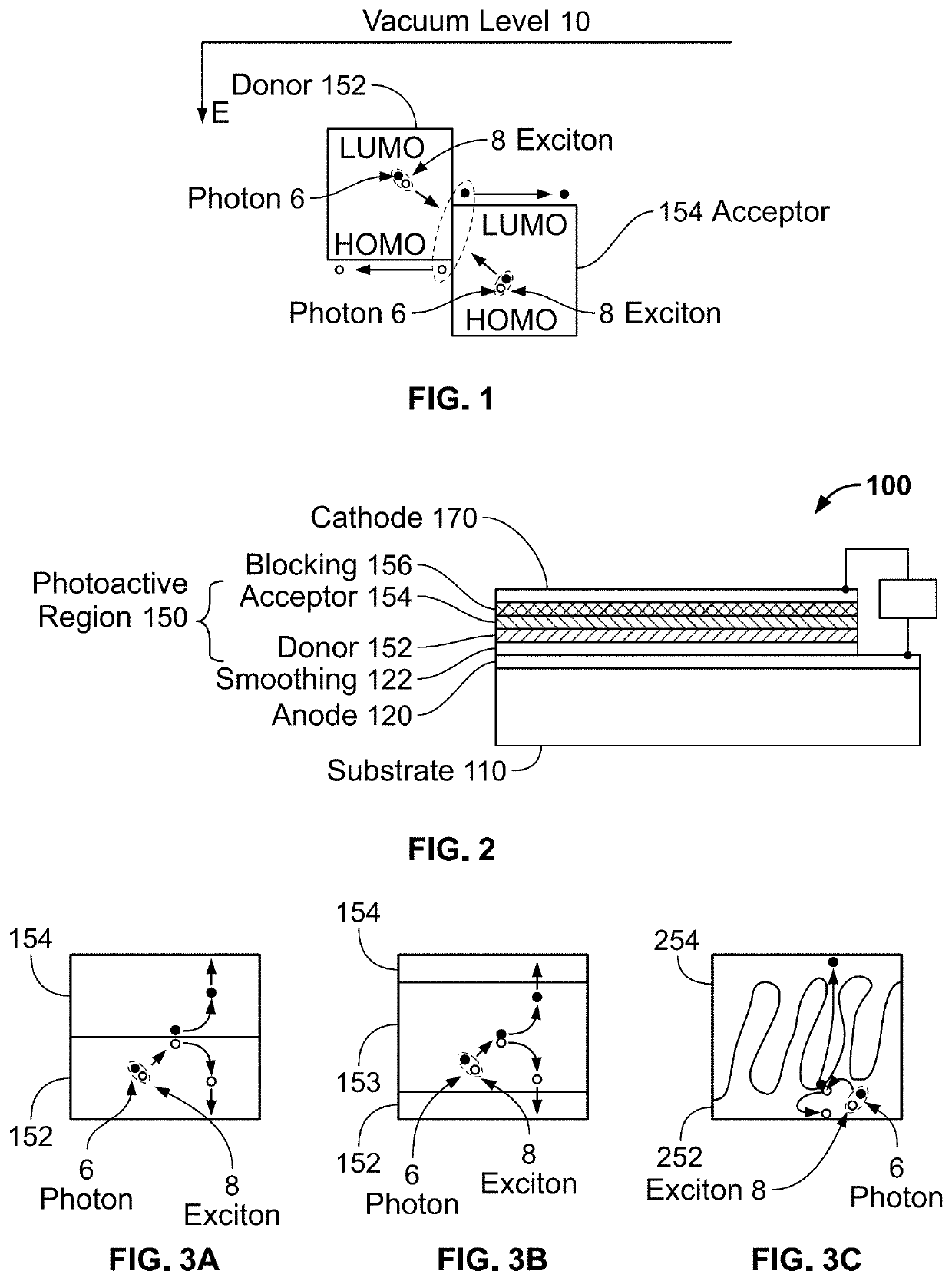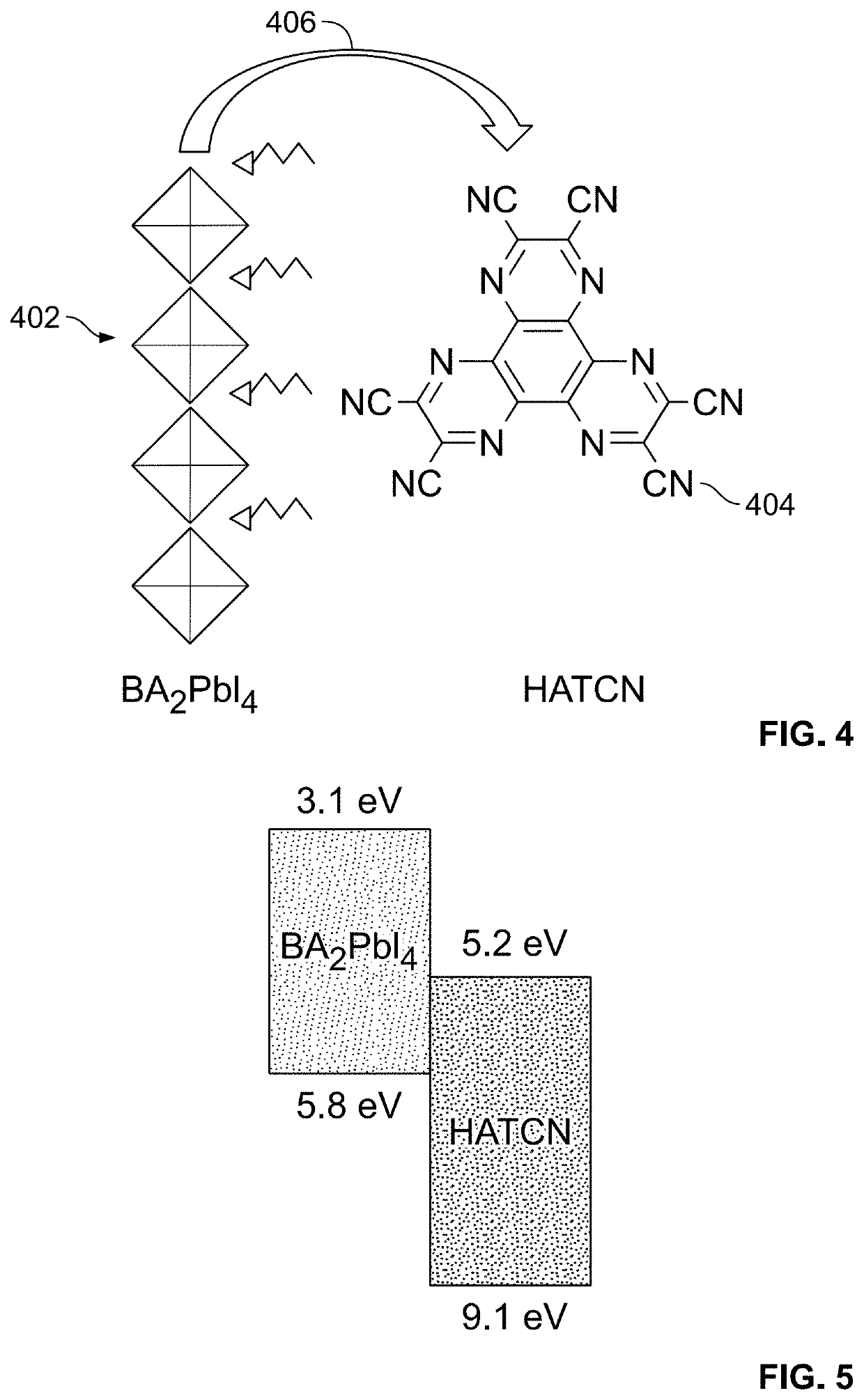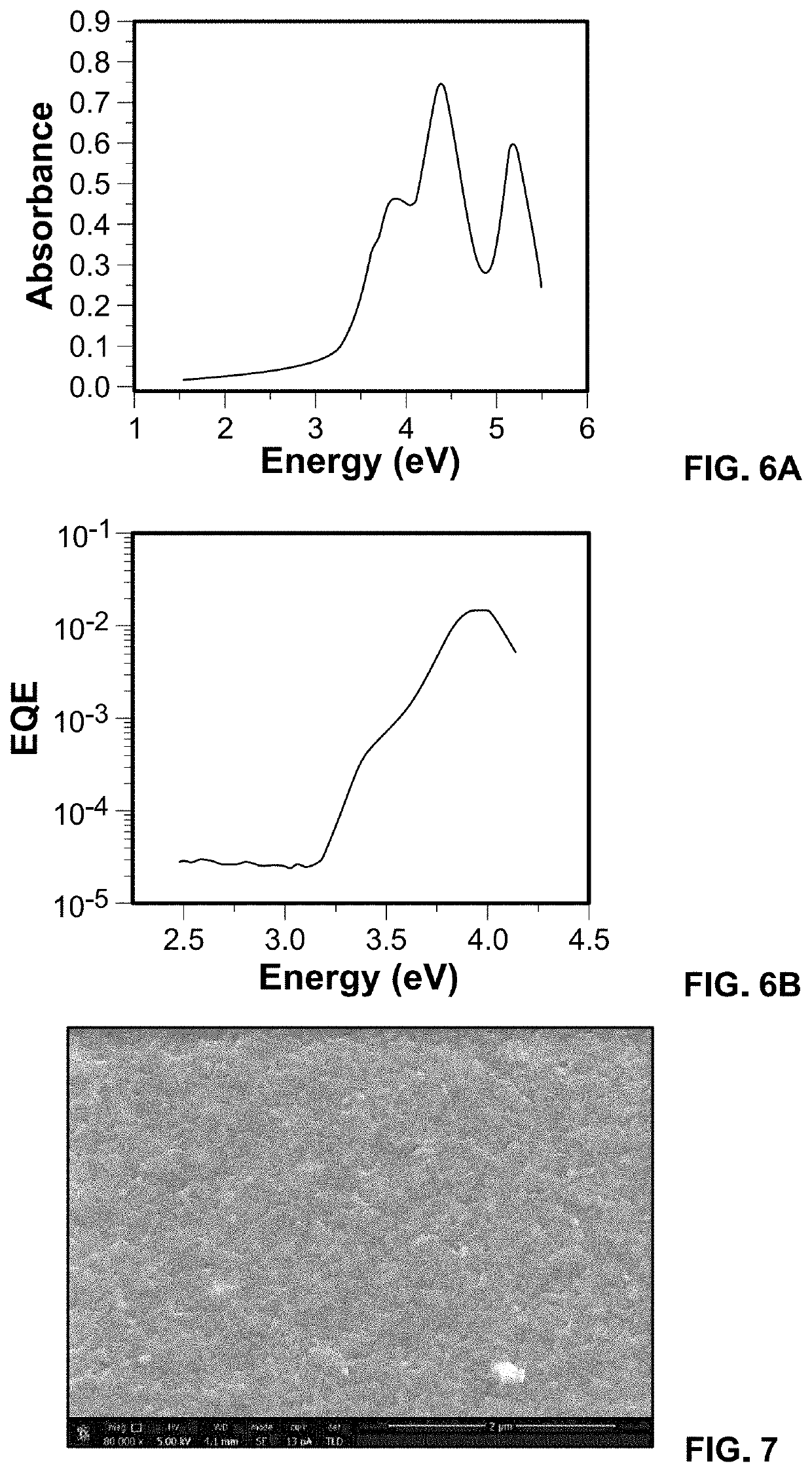Donor-acceptor interfaces for excitonic semiconductors
a semiconductor and donor technology, applied in semiconductor devices, solid-state devices, light-sensitive devices, etc., can solve the problems of reducing the overall photocurrent generation efficiency and the “bulky” organic cation, and achieve the effect of low exciton binding energy, efficient exciton dissociation, and notable progress in solar cell power conversion efficiency (pce)
- Summary
- Abstract
- Description
- Claims
- Application Information
AI Technical Summary
Benefits of technology
Problems solved by technology
Method used
Image
Examples
Embodiment Construction
[0046]The following is a detailed description of certain embodiments chosen to provide illustrative examples of how the disclosed invention may preferably be implemented. The scope of the disclosed invention is not limited to the specific embodiments described herein.
[0047]FIG. 2 is a block diagram illustrating an example of an organic photosensitive optoelectronic device 100 according to one embodiment, in which the photoactive region 150 comprises a donor-acceptor heterojunction. The “photoactive region” is a portion of the photosensitive device that absorbs electromagnetic radiation to generate excitons that may dissociate in order to generate an electrical current. Generally, excitons may be created and be stable in a material when the excitonic binding energy of the material is greater than 1-3 times the thermal energy of the material. The thermal energy is represented by kT, wherein k represents the Boltzmann constant and T represents temperature. In contrast, if the excitonic...
PUM
| Property | Measurement | Unit |
|---|---|---|
| LUMO | aaaaa | aaaaa |
| exciton binding energies | aaaaa | aaaaa |
| exciton binding energy | aaaaa | aaaaa |
Abstract
Description
Claims
Application Information
 Login to View More
Login to View More - R&D
- Intellectual Property
- Life Sciences
- Materials
- Tech Scout
- Unparalleled Data Quality
- Higher Quality Content
- 60% Fewer Hallucinations
Browse by: Latest US Patents, China's latest patents, Technical Efficacy Thesaurus, Application Domain, Technology Topic, Popular Technical Reports.
© 2025 PatSnap. All rights reserved.Legal|Privacy policy|Modern Slavery Act Transparency Statement|Sitemap|About US| Contact US: help@patsnap.com



